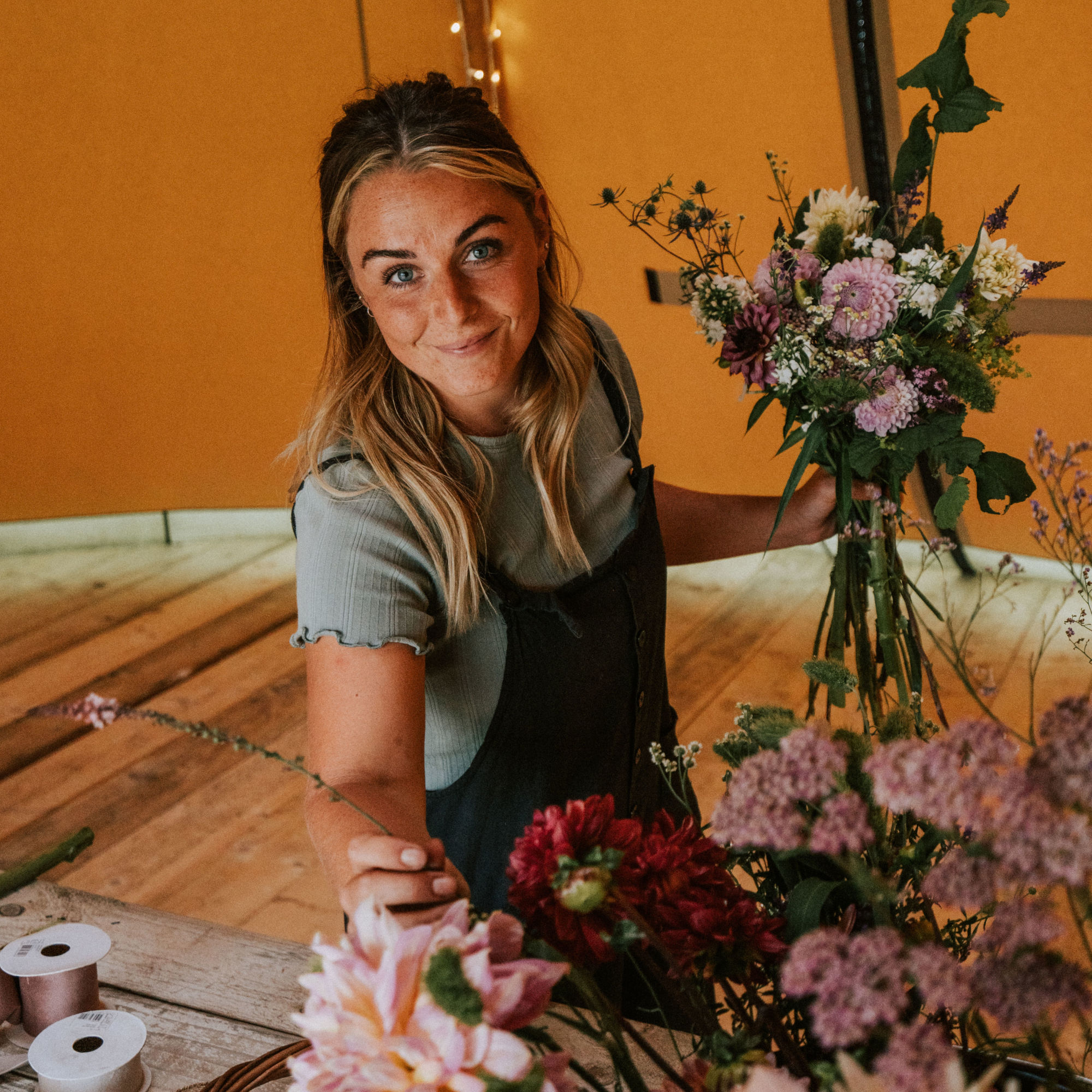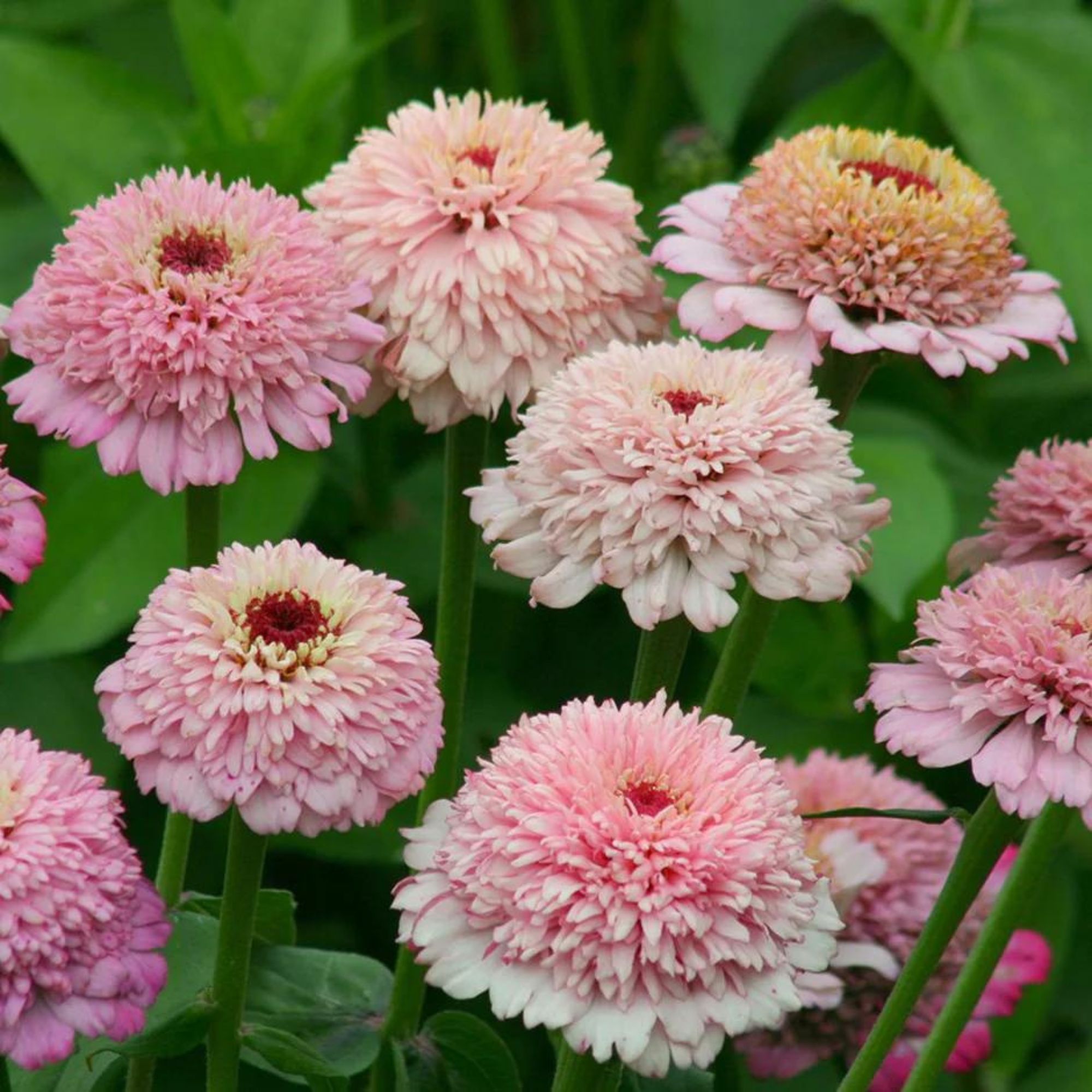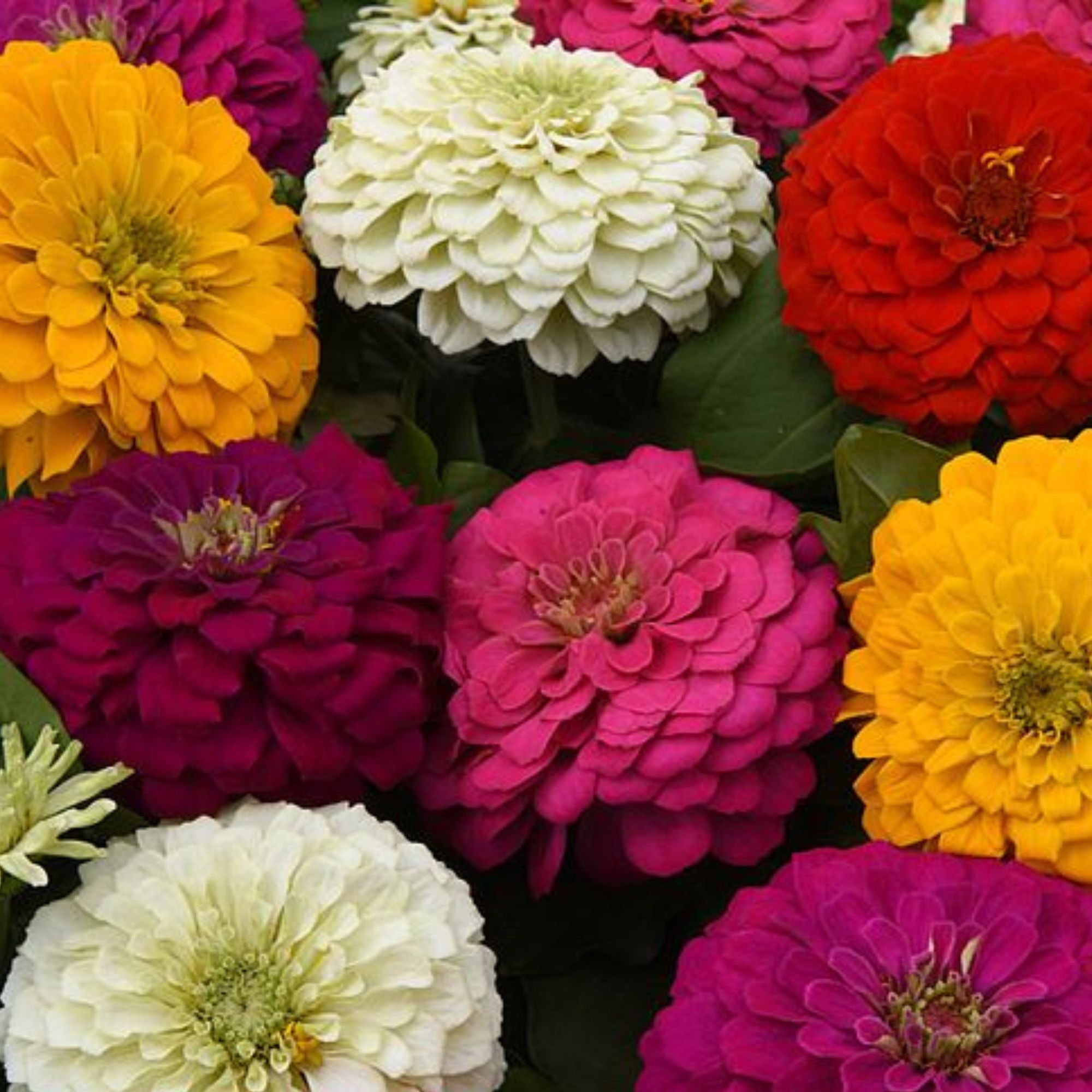I'm calling it! Zinnias are the flower of the summer – how to grow your own and fill your home with these colourful blooms for free
Endless Instagram-worthy blooms guaranteed


Zinnia season is a high point in my gardening calendar.
I grow them as cut flowers on my allotment as they are one of the best flowers for raised garden beds, and every year I reserve the sunniest bed just for them, because they are always worth the top spot. It hasn’t all been plain sailing – I’ve learned to stake, stake, and stake again to avoid unintentional beheadings.
Below, I’ve assembled horticultural experts to help you learn from my mistakes and grow zinnias like a pro.
These unusual flowers are beginner-friendly, love the heat and are an absolute joy to cut for the house, too. And right now, they’re having a serious moment – especially the peachy, subtler shades, made iconic by Floret Flower Farm.
From show gardens to floral Instagram feeds, zinnias are this season’s ‘must-have’ flower – and for good reason. Just check out the 450k #zinnia posts on Instagram to see why.
A post shared by Erin Benzakein - Floret (@floretflower)
A photo posted by on
How to grow zinnias
Ready to give them a go? Here’s everything you need to know – step by step – to grow zinnias successfully at home.
What you'll need
- Zinnia seeds or plug plants, like Sarah Raven’s Deep Zinnia Collection, 30 seeds for £4.98
- A modular seed tray if you’re starting from seed, like this module tray starter pack, £34.99 from Amazon
- Peat-free seed compost, like Verve cutting and sowing compost, £6, from B&Q
- Flower supports, like these bamboo canes, £6.49 from Amazon
- Plant food, like Natural Liquid Fertiliser, £36.99 from Thompson & Morgan
Step-by-step
1. Pick your perfect zinnia variety
You’ve got lots of options to choose from – and not just in shape and colour. Size matters, too.
Sign up to our newsletter for style inspiration, real homes, project and garden advice and shopping know-how
‘Choose dwarf varieties for vibrant bedding displays or taller types for long-lasting cut flowers,’ explains Nigel Lawton, plant buyer at Dobbies. ‘Single-flowered varieties are great for attracting pollinators, too.’

Here are some of my personal favourites:
- Zinderella Peach, 89p from Thompson & Morgan – Romantic, fluffy blooms in warm peach tones
- Giant Mix, from £2.25 at Sarah Raven – Tall and bold, ideal for cutting
- Cherry Profusion, £2.99 from Dobies – Compact variety great for containers
- Envy, £2.99 from Crocus – A standout green zinnia for a modern look
‘There is absolutely something for everyone when it comes to zinnias,’ says Sarah Raven, gardening expert and horticultural royalty.
‘Queeny Lime Red, £5.95 is a favourite at Perch Hill at the moment, with faded red flowers flecked with lime.’

Since the publication of her first book, The Cutting Garden, Sarah led the way in introducing a new kind of productive gardening. Sarah’s expertise extends to all areas, from cut flowers and vegetables to designing gardens packed with colour, and scent. Her gardening podcast has achieved 2.6 million downloads; she’s published 12 books and runs SarahRaven.com which services over 600,000 customers.
2. Start seeds the right way
Zinnias are best sown individually to avoid disturbing their roots later. But when should you plant zinnia seeds?
Expert florist, flower farmer and YouTuber Sarah Gray of Bloom & Gray says: ‘Zinnias are easy to get going from seed. Just pop one or two into a cell tray or pot with moist, good-quality compost and cover with a thin layer of compost or vermiculite.’

Sarah, owner of Bloom & Gray, is a flower farmer in the UK, growing seasonal blooms using regenerative methods and sharing her flower farming journey, tips and trials on YouTube since 2020.
‘Start sowing zinnias indoors in April or early May,’ continues Sarah Raven. ‘Use modules or coir pellets filled with peat-free compost, placing one seed per cell. Zinnias dislike being moved, so it’s much better than sowing into a tray.’
Keep them warm (ideally in a cold frame, greenhouse or windowsill) and in a bright place.
‘Once the seedlings have a couple of true leaves, start hardening them off, which means slowly moving them outside in the day and bringing them in at night for a few weeks. Or, wait until mid-to-late May to direct sow outdoors,’ adds Sarah Raven. ‘If you are happy sitting in the garden in the evening without needing extra layers, it is usually the right time. This often falls in mid to late May.’
Never sown seeds before? Check out our seed sowing guide to get it right every time.

3. Find the perfect spot in your garden
When it comes to planting your seedlings in the garden, creator of grow-your-own cut flowers subscription box The Floral Project Nicola Bird has sound advice: ‘Zinnias are heat lovers – they originate from Mexico – and thrive in poor soil. Think sunshine, good drainage, and minimal fuss.’

Nicola Bird is the woman behind the The Floral Project, a monthly cut flower seed box with a vibrant online community. She inspires gardeners across the UK to grow seasonal, eco-friendly flowers for joy, wellbeing and sharing with others – one bunch at a time.
Growing zinnias on a balcony or courtyard? You’re in luck. Zinnias are happy in pots, too – just don’t skimp on size. ‘A 35cm pot will comfortably fit three young plants,’ says Sarah Raven.
‘Use a compost that drains freely and water well after planting.’ See our container gardening ideas for even more inspiration.

4. Space plants properly
Zinnias are prone to powdery mildew in humid or cramped conditions.
‘Allow adequate plant spacing,’ says Sarah Gray. ‘This helps air flow between plants and reduces the risk of mildew.’ Sarah Raven advises spacing plants about 30cm apart in the ground.
Just in case you find your plants succumbing, check out our guide on how to get rid of powdery mildew for good.
5. Pinch for more blooms
To encourage bushier plants and extra flower heads, pinch out the growing tip once your zinnia reaches around 20-30cm tall.
Nicola explains: ‘It feels brutal, but it encourages side shoots and gives you more flowers later.’

6. Support tall varieties
Compact zinnias stay tidy, but taller varieties can droop in wet or windy weather – which has caught me out a few times. ‘Tall, large-headed zinnia varieties often benefit from a little support,’ says Sarah Raven. ‘Place bamboo canes next to each plant or stretch netting across the bed for gentle, even support.’
Personally, I prefer individual bamboo canes. I’ve found pigeons like to sit on the netting and flatten it to the ground. But try for yourself and see what works in your garden!
7. Water and feed wisely
Zinnias are relatively low-maintenance, but container-grown plants benefit from extra care. ‘Water deeply once a week during dry weather,’ says Sarah Raven. ‘If your zinnias are in pots, they may need more frequent attention. Feed with a liquid fertiliser every few weeks to keep the flowers coming.’
Interestingly, Nicola notes that zinnias grown in garden beds can actually be tougher than they look: ‘If they’re in the ground, don’t feed them – they’re tough little flowers with fiesta spirit!’

8. Pick blooms for the vase
Zinnias aren’t just beautiful in the garden – they’re brilliant for cutting. ‘Zinnias make excellent cut flowers,’ says Nigel. ‘Harvest stems in the morning when fully open, and strip lower leaves before placing in fresh water to prolong vase life.’
Nicola has a clever florist’s tip: ‘To test if a stem is ready to cut, give it a gentle wiggle. If it’s stiff, it’s ready. Floppy? Give it another day to firm up.’
‘Cut above a pair of healthy leaves,’ adds Sarah Raven. ‘This encourages more buds to form. They last well in water, especially when picked in the morning or evening and kept in a cool room.’
Zinnias are the gift that keeps on giving. Once they start flowering, they don’t stop – and the more you cut, the more they bloom. ‘A few well-chosen blooms in a jug or glass jar is enough to brighten the whole kitchen,’ says Sarah Raven. ‘Even a small number of zinnias can keep the house full of colour week after week.’
If you're after vibrant colour, pollinator-friendly planting, and armfuls of fresh flowers, zinnias are the answer.
Just don’t forget to save them a sunny spot, stake them well and deadhead them.
Natalie Osborn began her career in interiors journalism 15 years ago and went on to manage a portfolio of magazines, including the UK's leading kitchen garden magazine, Grow Your Own. Her two allotments (because one is never enough) are home to fruit, vegetables and heaps of cut flowers, ranging from delicious loganberries and burgundy red sunflowers to sweet yellow ball-shaped courgettes (better for dodging gluts) and a veritable farm of dahlias of every shape and size.
